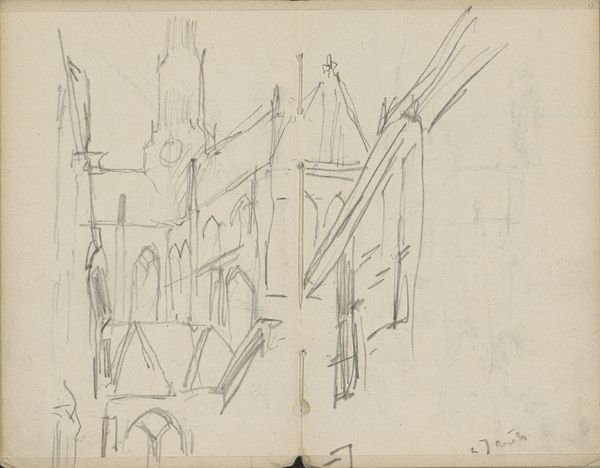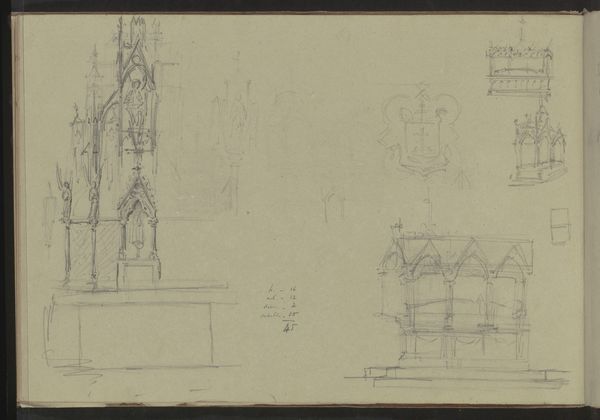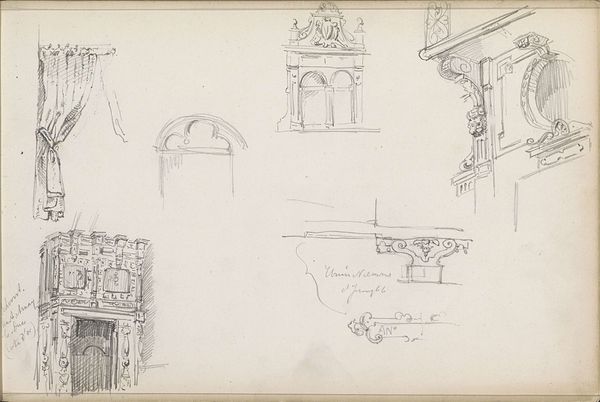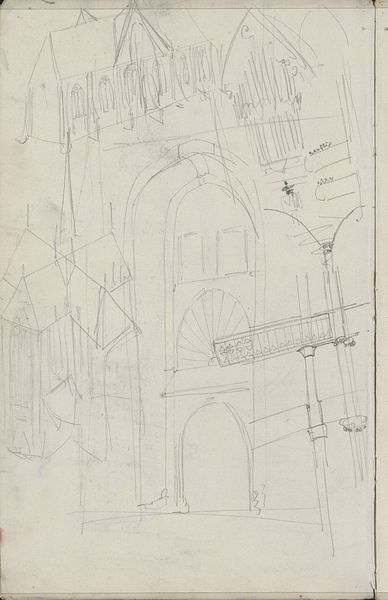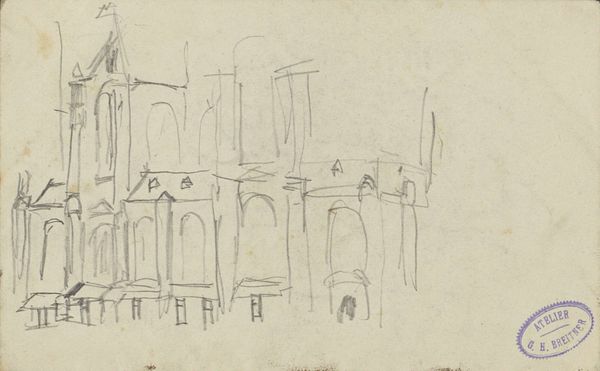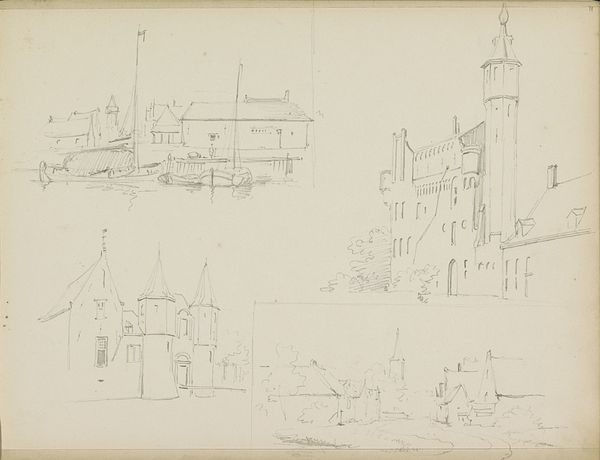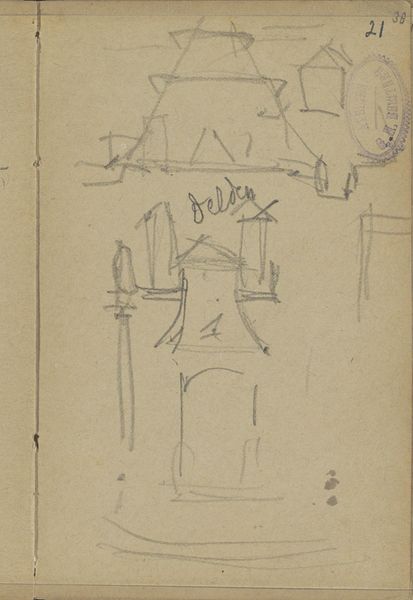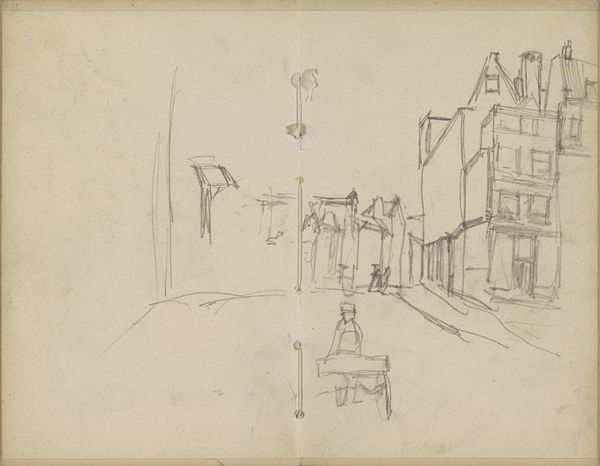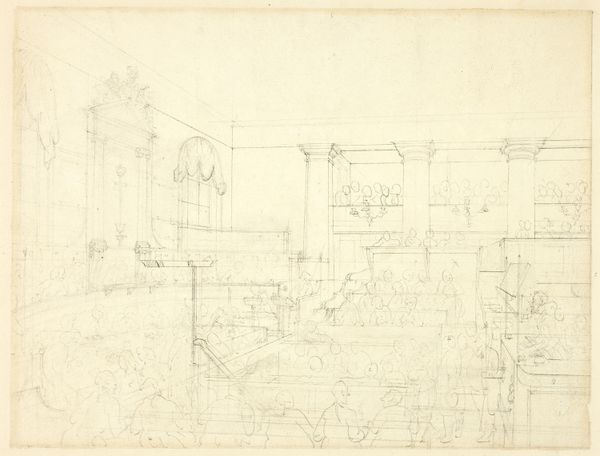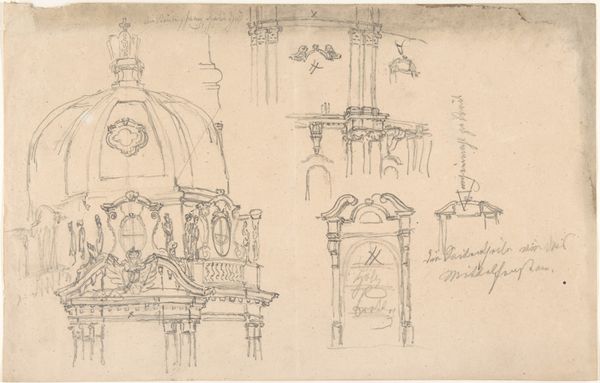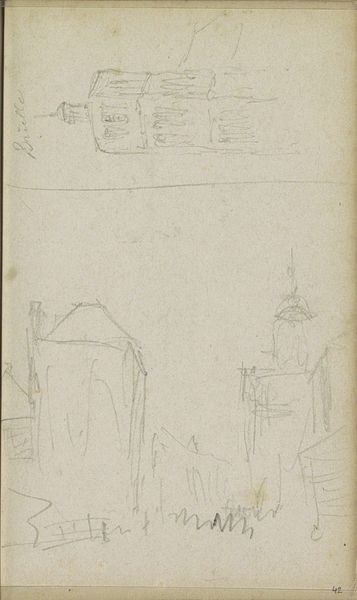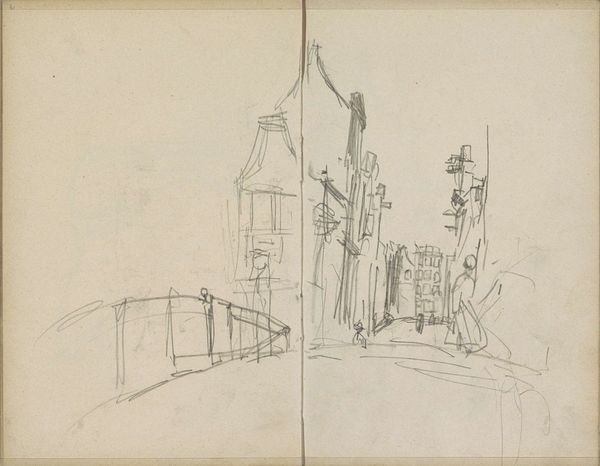
Gezicht op de Dam te Amsterdam met de Nieuwe Kerk 1886 - 1908
0:00
0:00
#
toned paper
#
sketch book
#
incomplete sketchy
#
personal sketchbook
#
idea generation sketch
#
sketchwork
#
ink drawing experimentation
#
pen-ink sketch
#
square
#
sketchbook drawing
#
sketchbook art
Copyright: Rijks Museum: Open Domain
Curator: Breitner’s “View of the Dam in Amsterdam with the Nieuwe Kerk,” dating from 1886-1908, presents a glimpse into his artistic process, a page torn right from his sketchbook, now residing here at the Rijksmuseum. Editor: My immediate impression is… fleeting. It's the ghost of a city. All delicate pencil lines on toned paper. Curator: Fleeting is right! Breitner was captivated by capturing the immediacy of urban life, right? This sketch gives us a sense of the dynamism, even the potential for social critique through raw representation. The labor of urban existence is revealed here. Editor: Indeed, looking closer, the carriage on the lower left, those sketchy wheels, hint at the movement of people and goods, the whole mechanism of city life. You feel the artist trying to seize a feeling through line work. You can sense his hand and arm working! Curator: Precisely. The Nieuwe Kerk looms large in the composition, of course. But even it is softened, made humble through its representation. Consider the raw materials: paper and pencil, cheap to obtain, but through an artist’s perspective capable of capturing so much. There is nothing romantic or fussy here. Just immediacy. Editor: Do you think there's anything lost by seeing a sketch out of context from a sketchbook, instead of as it originally was, bound up between other images, that we lose? It almost takes on another material quality – almost like this is another archaeological relic! Curator: Hmmm…a curious point. Perhaps its new materiality highlights labor… the unseen work behind finished canvases and oil paintings. But, looking beyond, I admire how the barest strokes evoke not only form, but even the atmosphere of a bustling Amsterdam square. Editor: I find myself appreciating the unfinished nature of it all. The blank spaces are as important as the lines. What remains unsaid. What remains undone… gives my own mind somewhere to go as a viewer! Curator: Exactly! We get to actively participate. This work whispers rather than shouts its intentions, which I appreciate. Editor: I will think differently about what it means to “see” a city after my experience. How we can engage with artworks even when seemingly in a skeletal state.
Comments
No comments
Be the first to comment and join the conversation on the ultimate creative platform.
